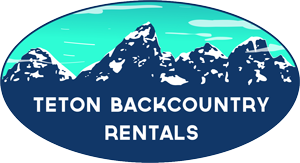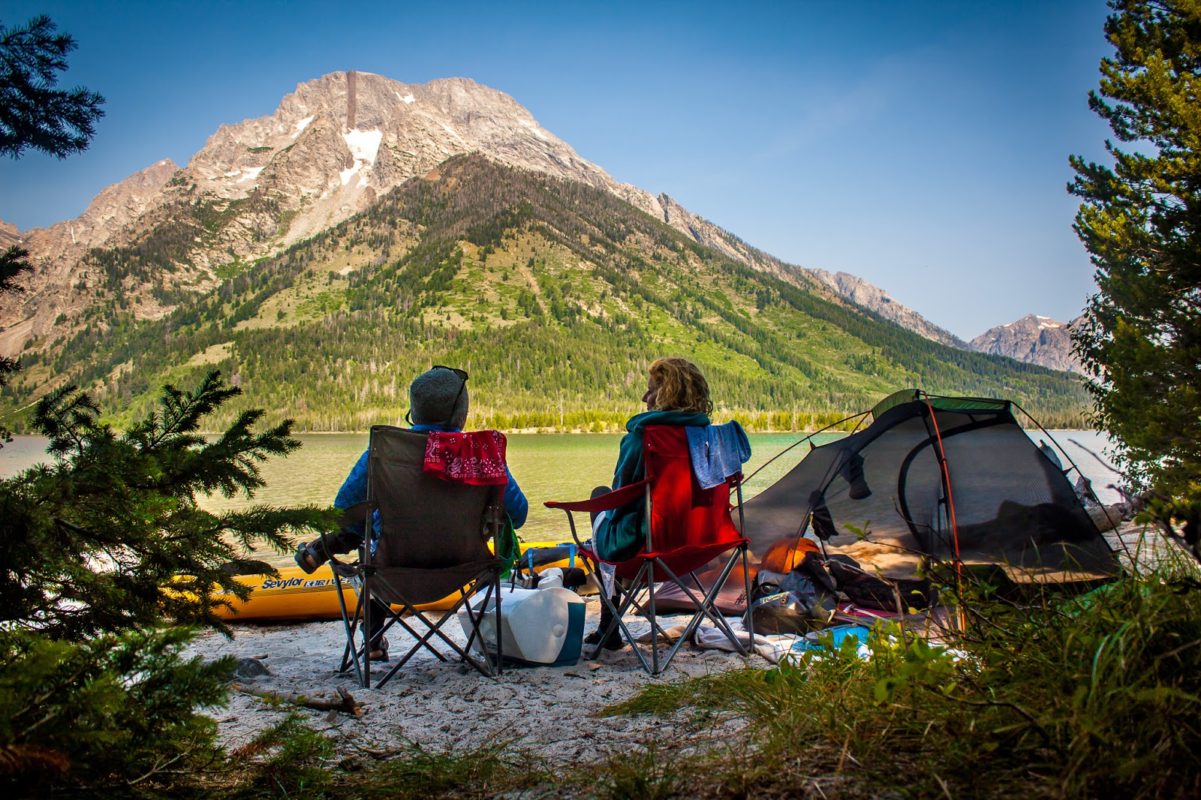Packing For Success Series: Clothing
Written By JJ Jaroch
This is the first in a series of posts on how to pack various adventures. Today we are looking at how to pack your clothes for a fun comfortable time while on the trails
Whether it’s your first or your four-hundredth trip to the Tetons, it never hurts to have a little refresher on what’s appropriate to pack. The time of year and type of trip you’re planning to take will lend themselves to various specifics, but there are few things you should ALWAYS have with you on a trip into the mountains.
Tops
- A hat. In the summertime a good baseball or trucker style cap will keep the sun off your noggin and the shade in your eyes. Think about packing along an extra ski hat to layer on top of your trucker cap if the weather takes a turn for the worse or darkness comes along sooner than you were expecting.
- Sunglasses. That sunshine is bright! Protect your peepers by having at least 1 pair of sunglasses along. You can secure them around your neck with a croaky. (Bonus points if you know the history of the croaky! It originally was invented by Jackson Hole Ski Patroller Robbie Fuller to keep him from losing his sunglasses while skiing.)
- A buff. Not just for wintertime, a buff can come in handy on bright sunny days to protect your face and neck from the sun. It also helps keep those pesky mosquitos at bay around camp in the evenings!
- Jackets! You’ll notice that’s jackets with an “s.” Weather in the mountains can be unpredictable. You might not ALWAYS need to carry EVERY jacket with you, but there are a few you should consider having in your arsenal.
- The Puffy. A good insulated jacket will come in handy more often than not. Whether it’s protecting you from the chilly wind on a ridgetop or keeping you warm on your morning jaunt for coffee, you’ll be pleasantly surprised how useful this layer becomes!
- The Rain Shell. Certain times of the year in the Tetons are rainier than others, having a sturdy rain shell will come in handy on the Crest Trail in the Spring and Fall when storms can park themselves over the mountains for days on end. You can layer one over top of your puffy for added warmth during those wet chilly downpour days.
- The Soft Shell. Lightweight breathable soft shell jackets are often a go-to for alpinist climbers and trailrunners alike. They’ll keep you warm on those zero-dark-thirty alpine stats, but also breathe enough to let the sweat you work up on the approach out.
- The Windbreaker. This ain’t your grandad’s neon parachute jacket from 1987. A lightweight windbreaker will help keep the sun off your shoulders and the wind from biting too harshly on warmer days when a soft shell or puffy would be too much.
Bottoms
- Pants. Hiking in jeans is the absolute WORST. They’re stiff and heavy, and will probably start chafing in some uncomfortable places before you get too far down the trail. Hiking pants made from a lightweight, either moisture wicking or softshell material will be your best bet here. Shorts aren’t necessarily the best option if you’re anticipating a bushwhack or scramble through rough terrain. You could always go for a convertible zip-off option if you’re worried about your knees going unseen.
- Socks. Happy feet make a happy hiker. Stock up on a pair or seven of wool hiking socks. They’ll wick away moisture & keep your toes snug on chilly days. If you DO opt to hike in shorts, then socks that come midway up your calf will help protect your ankles from scratches and abrasions.
- Boots or Shoes. Your everyday sneakers might be great for walking around town or working out at the gym, but chances are they weren’t designed for the rugged terrain of high peaks. Sturdy shoes with good soles are important to protect your toes and offer support to your ankles. Some boots and shoes are treated with waterproofing or are designed to be waterproof themselves. This is a feature that will come in handy when it comes to creek and snowfield crossings.
Other
- Bear spray. Unfamiliar weather and terrain can be frightening enough without the added danger of potential attack by charismatic megafauna like grizzly bears. Every local you talk to will tell you the same: they always carry bear spray, whether trail running, backpacking, fly fishing, elk hunting, or mountain biking. Bear spray on your belt is a MUST HAVE accessory.
Come back next week when we’ll go for a long stroll into some of the specific gear you might need for adventures in the Tetons that we at Teton Backcountry Rentals could provide. In the meantime check out our Camping in the National Parks page on more about how to camp in our wild and beautiful backyard!





Pingback: Packing for Success Series: Car Camping - Teton Backcountry Rentals
Pingback: Packing For Success Series: Backpacking - Teton Backcountry Rentals
Pingback: Packing for Success Series: Packrafting - Teton Backcountry Rentals
Pingback: Packing for Success Series: Truck Campers - Teton Backcountry Rentals